ROAR TOGETHER: Training to be the Real Deal

Applying makeup and prosthesis for realistic EMS simulation training
Elisabeth Curtis
November 28, 2023
How do we address the need for students to graduate from programs with the essential nontechnical and non-industry-specific skills applicable to a wide range of tasks across many roles and professions?
This is the question that area professionals in athletic training, technology, health education, health sciences, nursing, athletic training, physician assistants, law enforcement, EMT, college of tech, psychology, social work, and theatre discussed at Idaho State University during a stakeholder meeting on November 9-11.

Paula Phelps contributes to the stakeholders discussion regarding potential for university wide collaboration with simulation
This group of visionaries met to collaborate on how to improve the capability of professors to work across campuses and with community partners to teach such skills through simulation training. Simulation can be used, with actors portraying various scenarios and other theatre production applications, to help student learners across numerous fields to practice effective ways to deal with the stress and communication of the real world. This is true experiential learning for students in fields such as the health sciences. These visionaries believe that Idaho State University is poised to become a leader in this field.
The group of local educators, healthcare and emergency response professionals, theatre faculty, and students began their weekend with tours of ISU’s existing simulation centers, including a tour of the College of Technology, and a tour of Nursing. Theatre students were able to participate in trainings with Daniel Haley, a professional actor who holds a BFA in acting, an MFA in directing, and currently works as a simulator participant trainer at Washington State University. He travels across the country advocating for more people to get into this work, which he terms “applied theatre,” and which he says not many programs are doing.

Trajectory Consulting and Stakeholders Touring ISU’s facilities
“The field of simulation needs you,” Haley said to a group of theatre students. “There’s so much opportunity. You can still be auditioning for productions and during the day you’re acting or designing for this kind of work. You are the vanguard for this.”

Daniel Haley conducts training for theatre students and interested community members
Communication skills require practical application, feedback and coaching. Students have the opportunity of practicing real-life scenarios with student actors who can assist with active shooter scenarios for police forces; disaster scenarios; search and rescue training; standardized patients for health sciences; witnesses in mock trials; testing services; counseling or health services and more. Student learners then have the opportunity to receive feedback from both their professors and the standardized patients.
Theatre designers can contribute in a variety of ways as well, including moulage makeup for triage; location scouting and design that allows for training that is authentic and repeatable; props creation; and making models in labs.
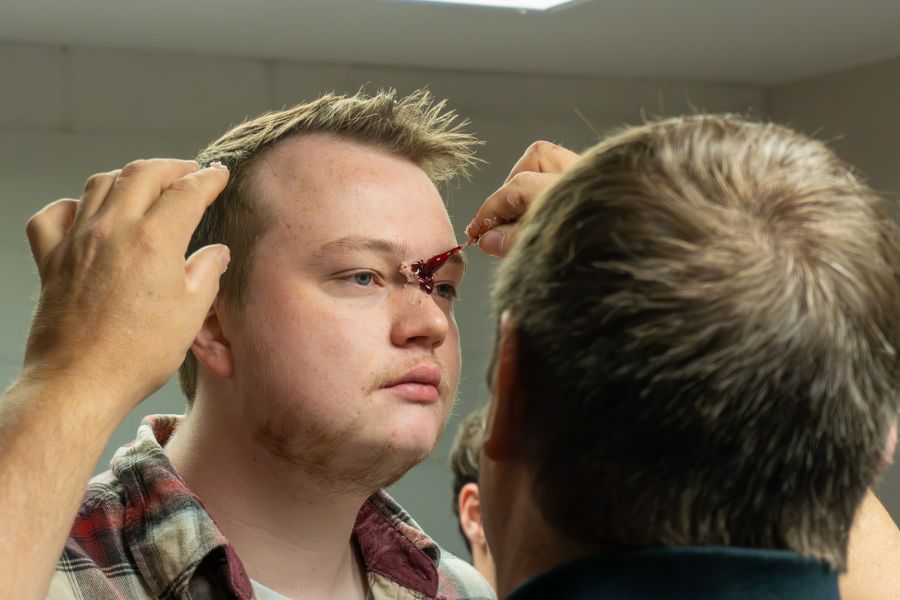
Applying moulage makeup for a more real-life experience
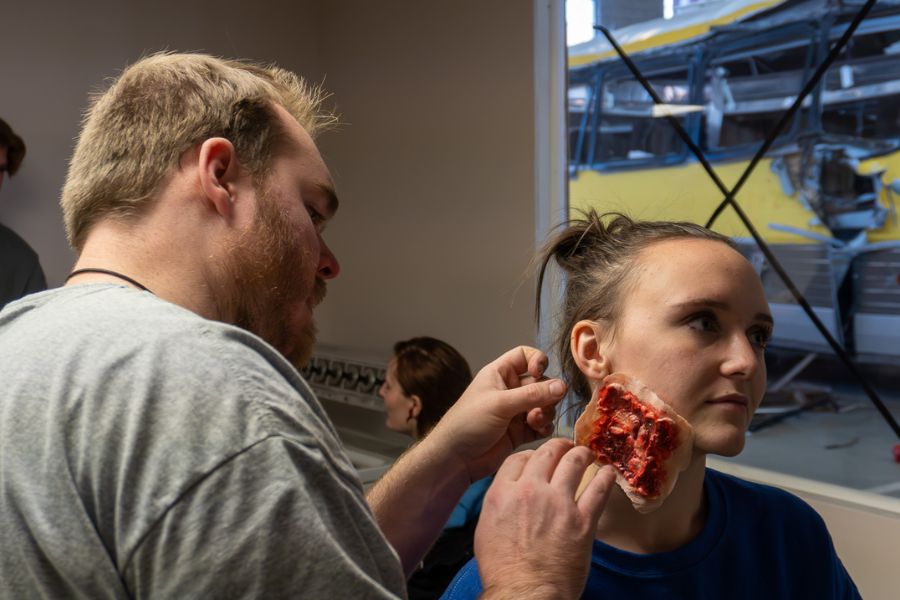
Applying makeup and prosthesis for realistic EMS simulation training
Addressing a diverse group of students interested in performance, scenic design, sound, makeup, scene management, directing, choreography, music, and dramaturgy, Vanessa Ballam, Professor of Theatre at ISU, is one of the key organizers.
"You are a key component in this idea," she said, emphasizing the broad spectrum of applications simulation has.
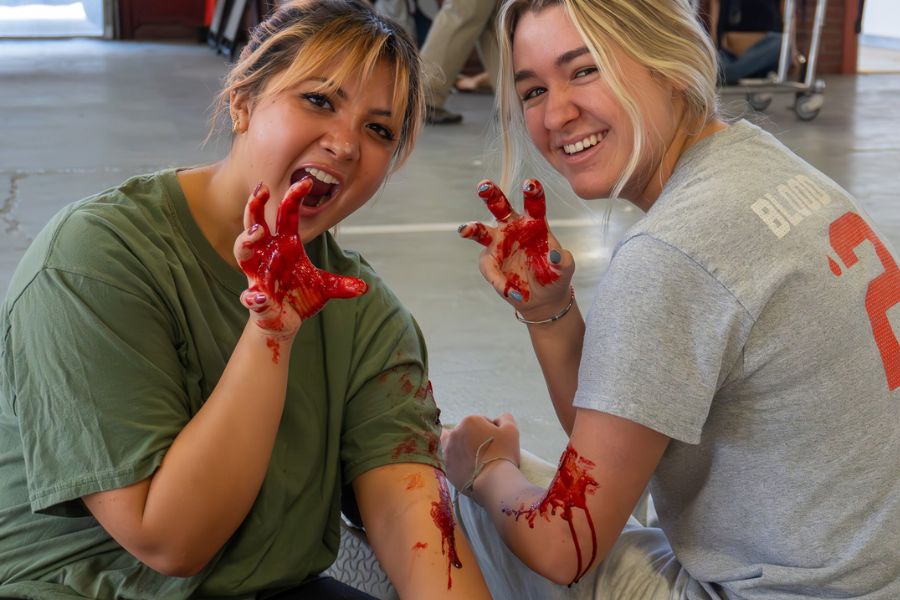
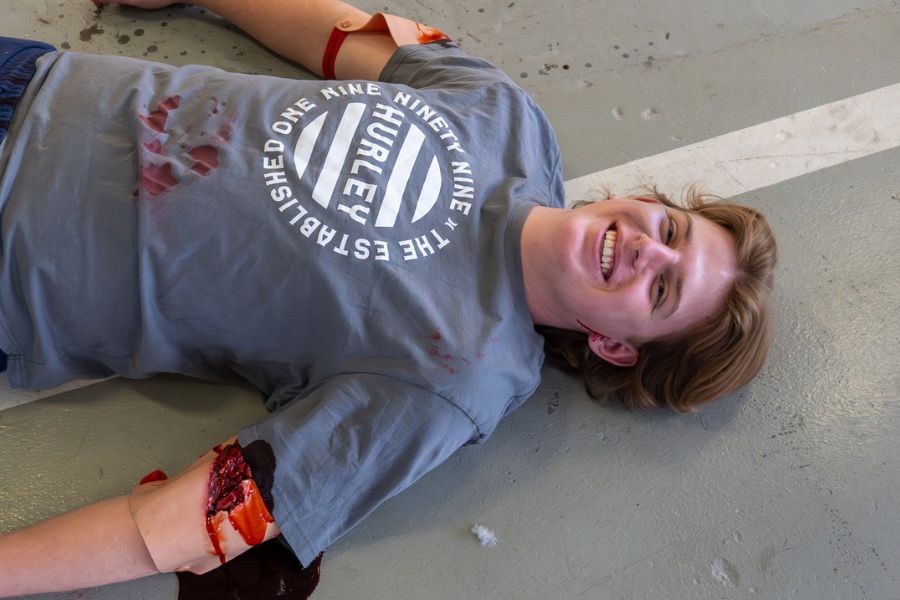
Actors are ready to portray a disaster scenario for EMS professionals
Daniel Haley, visiting consultant from Trajectory encouraged students to envision themselves contributing to the important field of simulation while continuing pursuits in their chosen artistic disciplines. Haley emphasized the need for inclusivity and diversity in simulation scenarios, mirroring the ongoing conversations in the world of theatre. Participants explored the agelessness of simulation work, challenging the notion that it is confined to certain age groups.
Key to the training session was the concept of experiential learning. The participants delved into the importance of repetition in simulations, highlighting the unique ability of actors to repeat scenes, a skill often taken for granted but crucial in the simulation environment. It promotes skill development, confidence, and competence over time.
Dean of the College of Arts and Letters, Dr. Kandi Turley Ames told stakeholders about her daughter, who is a student at Washington State University’s veterinary school, which has been implementing simulation training with great success.
“It’s been amazing to hear the extent to which the vet program incorporates this training,” Turley Ames says. “I see the application to so many disciplines at ISU.”
Dr. Cary runs the veterinary program at WSU. “The genesis for the simulation in the vet program was students and employers saying we can’t do this and it’s a problem,” she says. “We can coach, raise awareness, and try different approaches.”
Dr. Cary says that the simulation program “gives the learner the opportunity to say how can I do this differently, better?” It helps them learn their triggers, coping mechanisms and increases safety for the public, allows participants to provide better care, and teachers be more efficient as educators.
During the training, participants discussed why simulation is crucial for learners. Students in the session noted that before they had simulations, the first time practicing certain skills was on real people and that making mistakes in a safe environment with feedback from actors and faculty members can help them learn and remember.

Theatre Students brainstorm during a simulation training session
Dr. Fredi Giesler, Assistant Professor of Social Work at ISU, supervises Masters of Social Work students in their practicum experience. “Simulation helps students learn how to work with a variety of different patients in different contexts,” she says.

EMS professionals train with actors and a set for a bus accident scenario
Professor of Experimental Psychology and Department Chair of the Department of Psychology, Dr. Tera Letzring, says that simulation is important because “before we throw our students in with a real person with real problems, we can give them experience.”
The consensus was that simulation prepares individuals for scenarios that could potentially occur in their professional lives, allowing room for errors without adverse consequences. The value of direct feedback, the unpredictability of the human experience, and the safe space for learning were highlighted as key advantages.
Simulation methods include augmented reality, virtual reality, and the creation of realistic props. Integrated simulation could be used, for example, by combining ISU's synthetic arms with a live actor, allowing medical students to practice phlebotomy repeatedly on a synthetic arm, with a person.
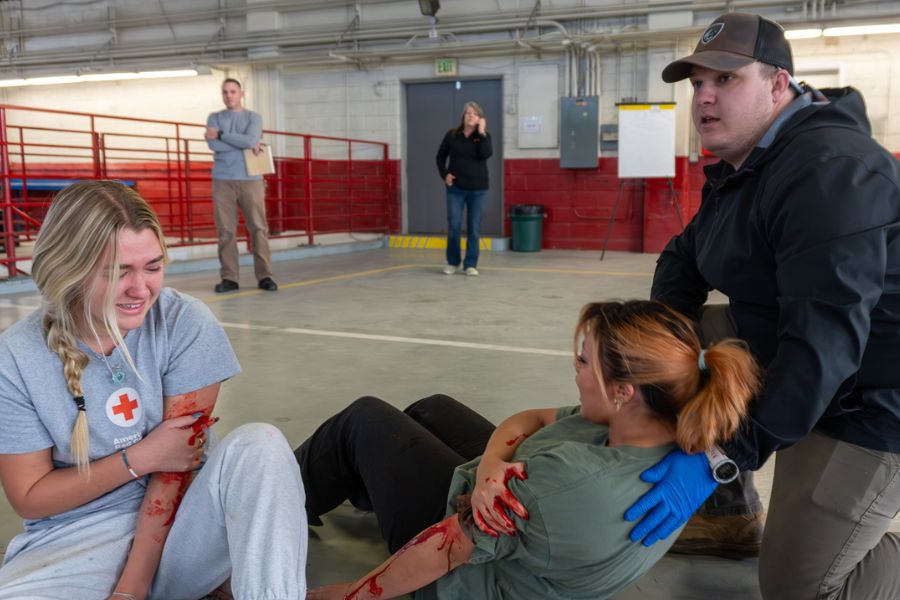
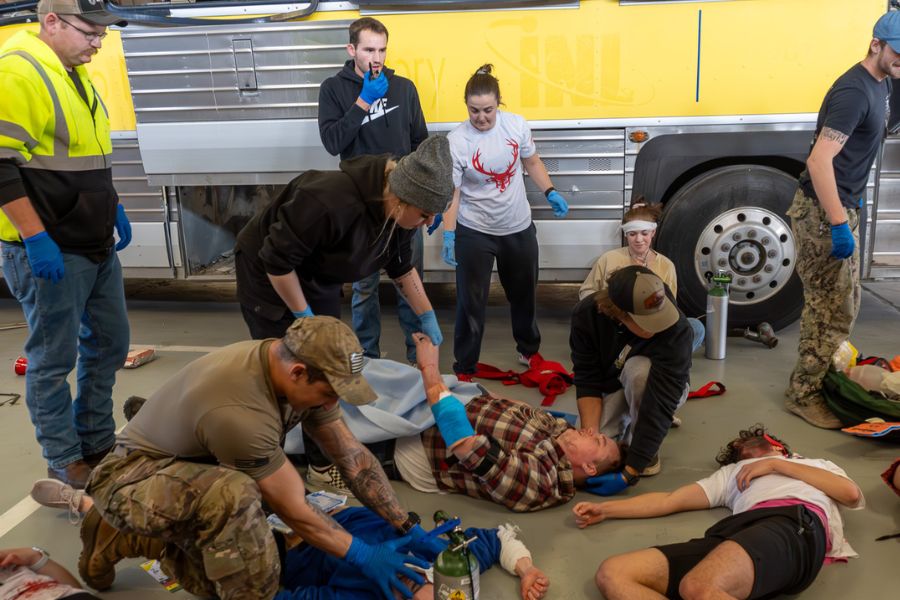
Actors, makeup, and sets make a scenario more realistic for EMS professionals in training
Vanessa Ballam stressed that simulation gives "viability to our program" and reframes students' abilities to contribute to society positively. Nursing representative Cara Esplin expressed the goal of expanding the nursing program to 500 students in five years, emphasizing the necessity of simulation for making this possible. Other stakeholders echoed the sentiment, noting its applicability across diverse disciplines.
“Simulation gives a great viability to our program and reframes our ability to contribute to bettering humanity,” Ballam says. “If we are able to do this together, it will be phenomenal.”

Hands-on experience with realistic newborn mannequins at ISU’s College of Technology simulation facilities

